This One Fought Back
But not in the way you might think. The model is Dora Wings' 1/48th scale Dewoitine D.510C modeled to represent an airplane in Chinese service against the Japanese during the late 1930s. The kit, which is essentially a high end short-run sort of thing, isn't nearly as tough to build as you might think; a little bit of planning and the exercise of some forethought prior to the actual construction of the model will yield a more than satisfactory result, but a certain degree of experience is extremely helpful. That said, it isn't a bad kit in most respects and is well worth the time and effort necessary to build it.
The things that make the kit difficult to construct don't have that much to do with its assembly rather but with the instructions, which leave a lot to be desired. They're 100% pictorial, which is ok and in keeping with what most folks do these days, but there's a tendency to omit certain things that could be considered important to anyone using them to construct a model. For example, there's no mention of the cannon barrel for the crankshaft mounted gun, although it's provided with the kit, nor is there any reference to the radio mast that's also included. There are also two different types of wheel pants, plus the option to build the model without them, underwing guns that may or may not be required for your model, and two varieties of cowl decking.
Dora Wings did a very good thing for the modeler and included all the parts necessary to build a D.500, a D.501, or a D.510, but they did very little to define which parts are used for which variants which adds a certain level of difficulty to the project until things are figured out. Add to that the existence of sub-variants of the major types, such as the D.510C I chose to model (apparently a variation unique to China), and things can get confusing rather quickly. It's always a good idea to have references available for any given project and that's essential for this kit. All the stuff you need to build any variation of the airplane is in the box but you, the modeler, get to figure out what to use for the variant you're modeling---a challenge, as it were.
The model includes a bit of resin and photoetch in addition to its polystyrene components and everything pretty much fits, but with a caveat, because those instructions don't show the installation of the cannon muzzle for the spinner, nor do they define how to assemble the flimsy and somewhat complicated undercarriage---the flimsiness of that assembly caused me to fabricate a couple of styrene reenforcements that were attached between the strut assemblies and the wheel pants as a just-in-case sort of precaution. Both of those things are pretty obvious and actually fairly linear once the work begins, but it's doubtful that every modeler will intuitively snap to what needs to be done and may suffer construction issues in consequence. The kit's design (or more likely its tooling limitations) result in the use of photoetch for several vented cowl panes, and extra care is required in those areas as well. Otherwise everything is pretty much a matter of applying a little bit of Scale Modeling 101 as you go along.
In my case the model is almost 100% kit stock, the only deviations being the use of a blunt hypodermic needle for the cannon muzzle and collimator (that tubular thing that most people mistakenly call a gunsight that's sticking out of the windscreen), plus a small piece of stainless steel wire on top of the cowling that's used to represent the fixed sight post living in that position. All of the paint is Mr Color except for the rudder stripes, which are a medium blue from one of those tiny square bottles of Testors hobby paint that many modelers are familiar with. The decals came to me by way of my friend Frank Emmett and consist solely of the underwing national insignia and those big fuselage numbers. The scheme itself was interpreted from the one existing photo (that I've seen, anyway) of the D.510 in Chinese service, and the information as to what made those Chinese Dewoitines unique was gleaned from various sources, with a major contribution coming from Nick Millman's wonderful Japanese aviation site. (As an aside, BestFong offer a decal sheet for the Chinese Dewoitines, but I didn't have it while the model was under construction. It may or may not contain further details unique to the C model but I can't say that with any certainty since I don't have the sheet.)
This model was one that reminded me a lot of the way things were when I first began "serious" scale modeling back in the 1960s. The kit was pretty good but required a little bit of extra effort, and quite a bit of extra energy was employed tracking down details of the real airplane and its actual appearance in Chinese service. There was an extra element of fun there that is so often missing from many of the uber-kits we have available to us these days and I truly enjoyed the experience. I just hope the darned thing is correct!
That's my story and I'm sticking with it!
phil


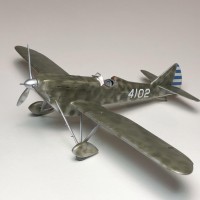
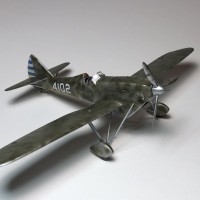
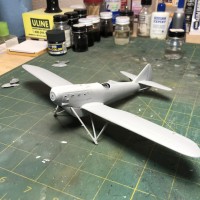
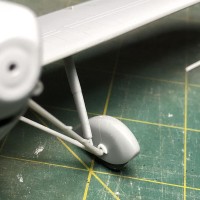
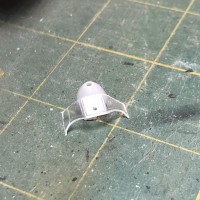
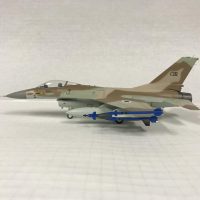

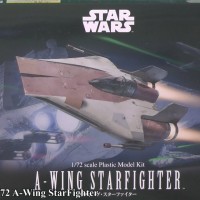
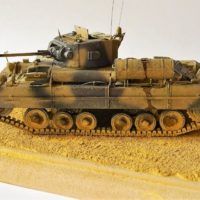
Fantastic finish on your D.510C Phillip, looks really nice.
I remember reading about the ROCAF D.510's on the 'Aviation of Japan' website. The details which stuck out was the mentioning that the prop blades were mottled.
Yeah I hear ya. Working on the Dora 1/32 version, got the Japanese issue but trying to do a Chinese also. The lack of reference material is annoying to a modeler that wants to "get it right", especially because, as you mention, the kit instructions are no help at all. The lack of information as to the wing machine gun configuration is really making me crazy. I hear of under wing pods, in-wing installation, and no use of them at all. The kit provides photo-etch parts to attach to the upper wing surface. Is one to ASSume these are present for in wing and under wing pods? My kid finally found one pic of a nosed-over Chinese D-510, which shows a vague triangular shape which approximates one of the etched parts. If any body out there has any skinny on this I would love the info. This won't be finished for a while as it is much too fridgid in my paint room (the back yard) and awaiting a bit of a warm up.
Anyway Phillip you have done a sweet job on that, the mottle finish looks spot on. While I got you here can you elaborate on what a columator is? I thought it was a tube sight myself. Congrats on the good looking Dewo.
Hi Bill, and thanks for the kind words. It's my understanding that the Chinese D.510Cs had guns inside the wings and, in keeping with the way Dora does such things there are cartridge case ejection ports molded into the wings that are flashed over and not mentioned at all in the instructions. The actual gun ports should be a little bit higher than the center of the leading edge of the wing and are a simple thing to add with a drill.
The collimator (I mis-spelled it in the original posting but corrected it a few minutes ago) essentially limits the spread of light beams and makes it easier to view an image produced inside them. In that respect it's a glorified telescope but a bit more sophisticated. They were used extensively on US Navy aircraft of the 1930s and it's my understanding that they could induce nausea under certain conditions. I doubt anybody missed them when they became obsolete!
I've gone back and added a couple of photos to my original posting to cover things I failed to mention the first time around. I added a couple of semi-circular reenforcements to the point where the wheel pants and undercarriage struts attach because it's a flimsy joint at best and needs a bit of help, or at least I think it does. They sortof look like they belong there and will hopefully avoid a gear collapse in the future. I've also added a photo of the hole I drilled into the windscreen to accept the collimator. It's an essential part of the airplane's appearance and needs to be there; fortunately, it's easy to drill, or at least it was for me.
My first Dewoitine was a horribly built RarePlanes vac-form, done back when Gordon first released the kit in the early 1970s. The model taught me how much I didn't know about building that genre of kit but it also gave me an affection for the airplane that I still have. Thanks to everyone for the positive comments on the model!
phil
Beautiful build, Phillip @phillipfriddell
The camouflage on this Dewoitine looks great, especially the mottling on even the propellor blades.
Well done.
You did a fantastic job Phillip!
Congratulations!
Wow, that’s a showstopper for me! I truly appreciate your build experiences comments. Seems Dora Wings kits are not the Tamygawa shake’n bake build style, but providing so many alternative pieces/versions without a clear and intuitive booklet is a minus for the brand.
On the plus side as seen in your fabulous Dewoitine (this is the sexiest Dewoitine IMO) they can be made to gorgeous looking models
Beautiful work, camouflage pattern and overall finish is excellent
Looks great, a build not seen too often.
That is a lovely build. I love the mottling over the NMF - looks excellent. Rare bird also, which is a plus!
Thanks, guys! This one was a gotta-build-it for me and I'm glad you like it!
phil